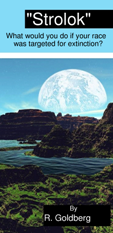 HATFIELD, England – In the search for Earth-like planets, astronomers zeroed in Tuesday on two places that look awfully familiar to home. One is close to the right size. The other is in the right place. European researchers said they not only found the smallest exoplanet ever, called Gliese 581 e, but realized that a neighboring planet discovered earlier, Gliese 581 d, was in the prime habitable zone for potential life.
HATFIELD, England – In the search for Earth-like planets, astronomers zeroed in Tuesday on two places that look awfully familiar to home. One is close to the right size. The other is in the right place. European researchers said they not only found the smallest exoplanet ever, called Gliese 581 e, but realized that a neighboring planet discovered earlier, Gliese 581 d, was in the prime habitable zone for potential life."The Holy Grail of current exoplanet research is the detection of a rocky, Earth-like planet in the 'habitable zone,'" said Michel Mayor, an astrophysicist at Geneva University in Switzerland.
An American expert called the discovery of the tiny planet "extraordinary."
Gliese 581 e is only 1.9 times the size of Earth — while previous planets found outside our solar system are closer to the size of massive Jupiter, which NASA says could swallow more than 1,000 Earths.
Gliese 581 e sits close to the nearest star, making it too hot to support life. Still, Mayor said its discovery in a solar system 20 1/2 light years away from Earth is a "good example that we are progressing in the detection of Earth-like planets."
Scientists also discovered that the orbit of planet Gliese 581 d, which was found in 2007, was located within the "habitable zone" — a region around a sun-like star that would allow water to be liquid on the planet's surface, Mayor said.
He spoke at a news conference Tuesday at the University of Hertfordshire during the European Week of Astronomy and Space Science.
Gliese 581 d is probably too large to be made only of rocky material, fellow astronomer and team member Stephane Udry said, adding it was possible the planet had a "large and deep" ocean.
"It is the first serious 'water-world' candidate," Udry said.
Mayor's main planet-hunting competitor, Geoff Marcy of the University of California, Berkeley, praised the find of Gliese 581 e as "the most exciting discovery" so far of exoplanets — planets outside our solar system.
"This discovery is absolutely extraordinary," Marcy told The Associated Press by e-mail, calling the discoveries a significant step in the search for Earth-like planets.
While Gliese 581 e is too hot for life "it shows that nature makes such small planets, probably in large numbers," Marcy commented. "Surely the galaxy contains tens of billions of planets like the small, Earth-mass one announced here."
Nearly 350 planets have been found outside our solar system, but so far nearly every one of them was found to be extremely unlikely to harbor life.
Most were too close or too far from their sun, making them too hot or too cold for life. Others were too big and likely to be uninhabitable gas giants like Jupiter. Those that are too small are highly difficult to detect in the first place.
Both Gliese 581 d and Gliese 581 e are located in constellation Libra and orbit around Gliese 581.
Like other planets circling that star — scientists have discovered four so far — Gliese 581 e was found using the European Southern Observatory's telescope in La Silla, Chile.
The telescope has a special instrument which splits light to find wobbles in different wavelengths. Those wobbles can reveal the existence of other worlds.
"It is great work and shows the potential of this detection method," said Lisa Kaltenegger, an astronomer at the Harvard-Smithsonian Center for Astrophysics.






No comments:
Post a Comment